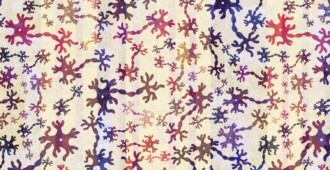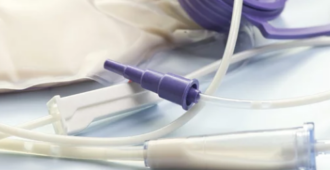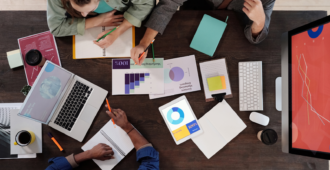In Chicago, it’s the beginning of the third day of the International Symposium on ALS/MND. I feel that I’ve become almost institutionalised: I get up, have breakfast and head down to the ‘Ballroom’ floor of the hotel. After saying a few hellos, I’ll head to my chosen session, settle down, get my notepad out and open my ears.
I’m really looking forward to hearing an update on the role of non-neuronal cells this morning. The opening speaker, Serge Przedborski, from Columbia University USA, is a name I’ve been reading on the top of research papers for years. So it will be great to hear what he has to say.
But before I head down there, I’m trying to unravel the blur of new ideas and people that I met yesterday, so I can tell you about them. It’s quite hard to remember who I heard when and recall the thing that made me sit up and scribble more furiously than before. I wanted to write more, but found myself writing lots about the posters and not finishing this until after the non-neuronal cell session – which lived up to expectations by the way!
Yesterday morning began with the poster session. It was the second poster session of the meeting, the first was on the evening of the first day. The two sessions felt quite different ‘a game of two halves’ is the phrase that comes into my head. At the first, there were lots of people there and lots of discussion. At the second, it was quieter, and more in depth, earnest conversations went on. At the second session it felt like, ‘ok we’ve done all the meeting and greeting, now let’s get down to the business of looking hard at the wealth of information that’s here to be digested’.
On Wednesday evening, my first concern on entering the room was ‘Has everyone put their poster up?’, ‘Can delegates find their way around?’, ‘Is there enough space to get past / light to read the poster?’ I spent most of Tuesday setting things up for the poster session – so I’m seeking reassurance!.
At allotted times throughout the two sessions, presenters are required to attend their poster – to give other delegates on opportunity to discuss their results, methods and interpretations. The times are printed in the programme for the meeting – so if there’s someone you definitely want to talk to, catching them at their poster slot is a good bet. That’s particularly true this year with over 900 people attending. Once I’m reassured that it all looks to be working well, I started to head to the part of the room where I know the presenters will be standing by their work.
The room is literally buzzing with people talking about MND research and the clinical management of the disease. There are lots of people here, many that I know and haven’t spoken to yet! So I stop to have a chat, see how their work’s going. I take the ideas that one researcher has told me and carry them along to a poster a few metres down the room. I quite often find myself asking, ‘So, how does your data compare to poster X’ or ‘Poster Y / person Z is looking at a similar area, have you spoken to them’. Before I know it, the sessions come to an end – and / or I’ve hit a wall where I can’t digest any more science – and I didn’t get to see the posters I was really interested in reading.

On my second visit, I’m a lot more focussed, but even then, I find myself getting disctracted in lots of interesting ways. Which is how I came to have a conversation about the costs of getting a genetic test in USA. Until a year or so ago genetic tests for MND weren’t part of a medical insurance packages. Thank goodness for the NHS, making decisions about whether to undergo a test to see if you carry a gene for MND in those rare cases where there is a family history of the disease are difficult enough, without having to consider whether you can afford it too. Another ‘chance’ poster was learning about a novel, and very new, way of managing dysarthria. The neurologist explaining this data gave me a quick tutorial on what happens in dysarthria: basically the closure of a passage between the nose and the throat doesn’t function properly – air escapes up to the nose when speaking, but also when breathing in (the latter means that less air gets to the lungs)(P25 in the abstract book if you want to know more). This can be corrected by putting in a plate (a bit like the plates that are used for false teeth), but this is poorly tolerated by people with MND. So, trying a method that has worked for non-MND patients that have a similar problem, Dr Storck from Switzerland, and colleagues have used a fat transplant, to help this passage way close more effectively. It’s early days, its only been done in three patients so far, but they report a positive effect.
Our International Symposium website news stories:
International Symposium closes in Chicago
International Symposium focuses on clinical trials
International Symposium focuses on carer and family support
International Symposium begins in Chicago
Researchers unite at our International Symposium on MND
After you’ve finished reading the symposium articles that interest you, we’d be grateful if you could spare a few minutes to fill in our short online survey on our symposium reporting. Your comments really are useful and allow us to continually improve our symposium reporting. surveymonkey.com/s/alssymp






Comments are closed.